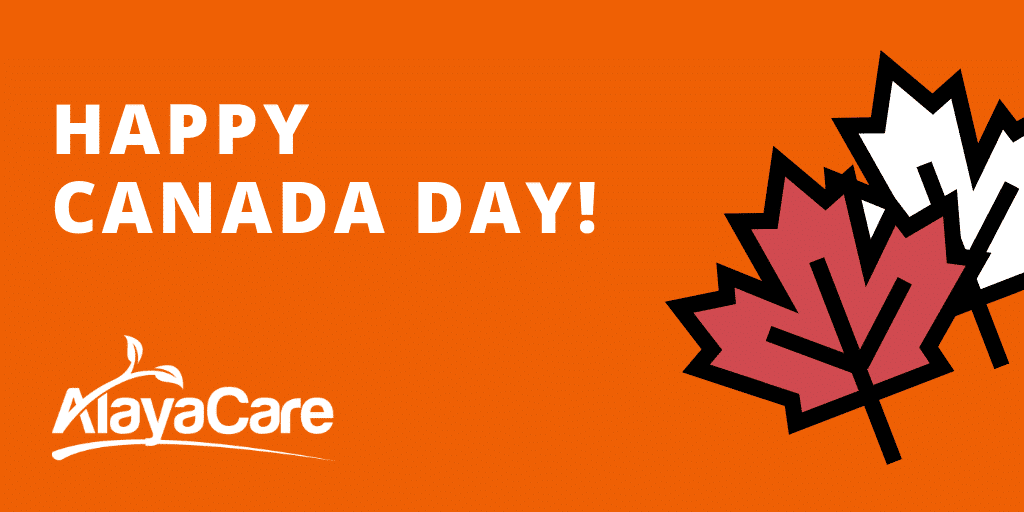Blog
Happy Canada Day to Our Home Healthcare Community!

This first long weekend of the summer reminds us of road trips, fireworks, barbecues, swimming and the existence of sunscreen in our cupboards – because we finally need some after quite the lengthy winter (and spring!) in many parts of the country.
In addition to all of that, we wanted to take a moment to reflect on something near and dear to our hearts: the top ten moments in the evolution of the Canadian home care industry that have pushed us forward to where we are today:
- Ontario establishes home care as part of the formal health care system in 1970. Initially in Canada’s most populous province, home care programs were local in nature and often tethered to hospitals or agencies such as the Victorian Order of Nurses and the Red Cross.
- A working group on home care forms. Federal, provincial and territorial officials set course in 1974 with a working group on home care. This group helped identify the need to compare definitions and data, to share outcomes and best practices, and to implant home care into the broader continuum of care.
- Provinces get extra funding, more flexibility. In the late 70s through the 90s, the Established Programs Financing Act sent federal transfers to provinces and territories for extended health care services, using a population-based formula. With this flexibility, provinces and territories developed extended services such as home care, ambulatory care, and long-term care.
- Home care is identified as a priority. In 1998, Health Canada officially identifies and approves continuing care and home care as priority areas for federal/provincial/territorial action.
- Construction begins on national health information highway. After committing to a coast-to-coast health info pathway, Ottawa announces in September 2000 that it would invest $500 million toward modern info-tech systems such as electronic health records (EHRs). The next year, funds flow to Canada Health Infoway, who sets course on implementing interoperable electronic health solutions.
- Home care assessment tools arrive. In 2004, the Health Council of Canada begins to focus on public reporting on health status and health outcomes, including home care. That same year, the InterRAI Home Care Assessment System, a standardized assessment tool used to assess home care clients, is implemented across British Columbia.
- Home care reporting system launches. In 2005, the Canadian Institute for Health Information introduces a home care reporting system to track and measure the quality and cost of publicly-funded home care.
- Coverage for home care services. In 2004, Canada’s first ministers agreed to provide first-dollar (100%) coverage for specific home care services. In early 2007, all provincial and territorial health ministers had taken steps toward fulfilling that commitment.
- Expanded tax-relief and tools. The 2013 federal budget announces expansion of health-related tax relief for home care services. Meanwhile, the Canadian Home Care Association issues the Home Care Lens, a tool for policy planners and service providers to help them develop and apply integrated models of care.
- Canada emerges as leader in artificial intelligence. Canadians, including the so-called godfather of deep learning, Geoffrey Hinton, have started to push the field of AI forward and illustrate how it can disrupt the delivery of health-care for the good. We are in an ecosystem of growth for AI and it will have wide-ranging implications and virtually limitless possibilities for how we manage our aging population.
And…we’d be remiss in not adding another huge milestone – the founding of AlayaCare in 2014 of course! Thank you to all of our home care industry colleagues and friends for helping us continue to write the next chapter in home care history. Happy Canada Day to all!


